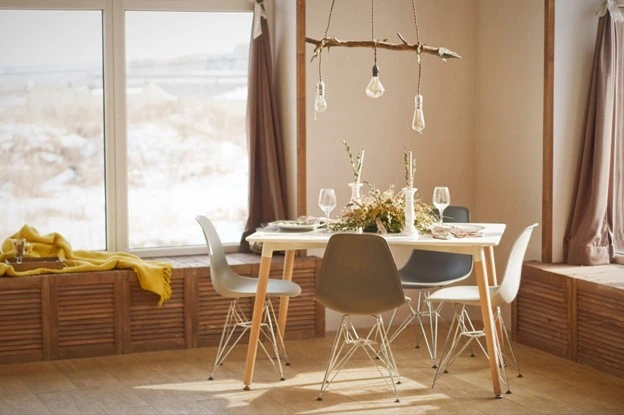
So, you’ve been staring at your tile floor, questioning every life choice that brought you here, and wondering: “Can I just slap some laminate over this and call it a day?”
The good news is that, yes, you can! Installing laminate over tile is not only possible but also a cost-effective and time-saving option.
You don’t need to grab a sledgehammer or endure the dusty chaos of tile removal. But before you go all in, though, there are several factors to consider, including the condition of your existing tile and the preparation steps required for a successful installation.
Assessing the Condition of Your Tile
Before you rush into this like a contestant on a home renovation show, let’s talk about your tile situation. Are your tiles cracked, loose, or uneven?
If so, you’ll need to address that first. Otherwise, your laminate will end up looking like a rollercoaster of flooring nightmares. You do not want to deal with that right? Here are a few critical preparation steps:
Fix the Cracks
Addressing underlying structural issues is a critical step before installing laminate flooring.
While laminate can hide minor imperfections, it’s not designed to mask significant flaws in the subfloor.
Large cracks, gaps, or uneven areas can lead to premature wear, instability, or even failure of the laminate flooring system.
Pay special attention to loose tiles, as these can create pressure points under the laminate, potentially leading to damage or noticeable imperfections in the finished floor.
By taking the time to properly prepare the subfloor, you’re investing in the longevity and performance of your laminate flooring, ensuring a smoother, more stable surface that will look better and last longer.
Level the Surface
Uneven tiles can cause laminate to warp or crack over time. Use a leveling compound to smooth out the surface, ensuring a flat base for installation.
Get this part right, and you’ll save yourself from laminate flooring disasters down the line.
The Pros and Cons of Installing Laminate Flooring Over Tile
Now that you know laminate can go over tile, it’s essential to weigh the pros and cons of putting laminate flooring over tile.
Pros of Installing Laminate Flooring Over Tile
Time-Saving
Laying laminate over tile saves you the effort of tearing up the old flooring, which can be both labor-intensive and messy.
Just lay the laminate right on top and save yourself from the dusty chaos. Just assess the tile as mentioned above.
Cost-Effective
You save money by avoiding the costs associated with tile removal and subfloor preparation.
By keeping the tile in place, you’ll cut down on labor costs and make room in your budget for other things (like new furniture to match your fresh floor).
Versatile
Laminate is available in a variety of designs that mimic wood floors or stone, allowing you to refresh your space with a new look. Plus, the flooring installation is a breeze compared to other flooring options.
Cons of Installing Laminate Flooring Over Tile
Increased Floor Height
Adding laminate on top of tile increases the floor height, potentially causing issues with door clearance and transitions to other flooring types.
Sound Amplification
Laminate tends to amplify sound, making noise reverberate more in the room, particularly when installed over a hard surface like tile.
So, if you’ve got heavy-footed people in your home, expect some noise. That goes more so if you have pets, as well.
Preparation Is Key
The condition of your tiles is key. If the tile surface is uneven or damaged, you’ll need to invest time in repairs and leveling, which could complicate the installation.
Is Laminate Flooring the Right Choice for Your Space?
Before you commit, consider whether laminate flooring is the right floor for your space.
Laminate is durable, cost-effective, and easy to maintain, making it an ideal choice for many areas in the home. However, it’s not a one-size-fits-all solution, and there are a few points to keep in mind:
Moisture
A critical factor to consider when contemplating laminate flooring, especially in areas prone to water exposure like bathrooms, kitchens, or basements.
Traditional laminate is susceptible to water damage, which can cause swelling, warping, or separation of the planks.
For areas with persistent moisture issues, alternative flooring options like vinyl flooring might be more suitable. By carefully considering moisture levels and taking appropriate precautions, you can help ensure the longevity and performance of your laminate flooring.
High Traffic
Areas in your home require flooring that can withstand constant use without quickly showing signs of wear.
Laminate flooring, with its durable wear layer, is well-suited for these busy spaces, but the quality of the product plays a crucial role in its longevity.
When selecting laminate for high-traffic areas, pay close attention to the AC (Abrasion Class) rating, which ranges from AC1 (suitable for light residential use) to AC5 (appropriate for heavy commercial use).
For busy household areas, aim for AC3 or higher. The thickness of the planks and the quality of the core material also contribute to durability.
Aesthetic
One of the most appealing aspects of laminate flooring is its ability to mimic the appearance of natural materials like hardwood floors, stone, or tile at a fraction of the cost.
Modern manufacturing techniques have significantly improved the realism of laminate, incorporating detailed grain patterns, authentic colors, and even textured surfaces that closely resemble the look and feel of natural materials.
This versatility in design allows homeowners to achieve the aesthetic they desire without the high price tag or maintenance requirements of real wood or stone.
Learn more about laminate flooring.
So, Can You Put Laminate Flooring Over Tile? Absolutely!
It’s a smart, cost-effective way to upgrade your space without the headache of tile removal.
By addressing the condition of the tiles and taking the necessary preparation steps, you can enjoy the benefits of a quick and beautiful flooring transformation.
Whether you’re looking for a budget-friendly option or simply want to save time, laminate flooring could be the right solution for your home update.
If you have more questions, contact us here, even if it is to get a quote about other flooring types for installation.


